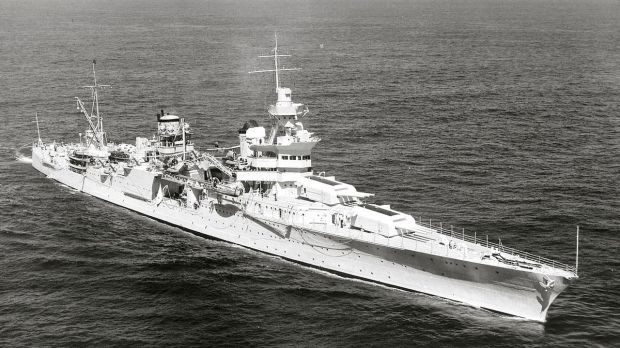
Most people will associate the name of L. Ron Hubbard with the Church of Scientology and his work as an author of science fiction books. Although one may not fully understand the concept of the Church of Scientology or agree with its teachings, you would have to agree it is a successful venture, and the same can be said about his work as an author.

But as the title suggests this blog is about his lesser known career. A career which wasn’t as fruitful.
During WWII L. Ron Hubbard served in the US Naval and had actually commanded 2 naval vessels, the USS YP-422 and the USS PC-815. It is the latter one I will be focusing on
The USS PC-815 was a PC-461-class submarine chaser built for the United States Navy during World War II.

In November 1942, Hubbard was sent to the Submarine Chaser Training Center in Miami, Florida for training on submarine chaser vessels. He then went on a ten-day anti-submarine warfare training course at the Fleet Sound School in Key West .On January 17, 1943 he was posted in Portland, Oregon,where he took command of USS PC-815.
While he was in command of the vessel, Hubbard was involved in two bizarre naval incidents. In May 1943, he reported that his vessel had damaged and sank two Japanese submarines that surfaced off the coast of Oregon.
Over a duration of 68 hours, the ship dropped 37 depth charges in a “sea battle” that also involved the U.S. Navy blimps K-39 and K-33, the United States Coast Guard patrol boats Bonham and 78302, and the sub chasers USS SC-536 and USS SC-537, all were called upon to to act as reinforcements. PC-815 was finally ordered back to base on 21 May. His superiors couldn’t find proof that any submarines had been sunk anywhere near the place which Hubbard indicated; his claims were dismissed.
In an eighteen-page after-action report, Hubbard stated to have “definitely sunk, beyond doubt” one submarine and critically damaged another. The submarine he claimed to have sunk was the I-76.

However that submarine was still operational in April 1944.
Admiral Frank Jack Fletcher a decorated Navy officer, was assigned to investigate Hubbard’s sinking of a Japanese submarine.In his report dated June 8, 1943 to the commander in chief of the Pacific Fleet, Fletcher writes, “An analysis of all reports convinces me that there was no submarine in the area.”
Admiral Fletcher’s investigation suggested that Hubbard mistakenly read a magnetic iron ore deposit on the ocean floor as two enemy submarines on their sonar.

The second incident nearly caused a diplomatic conflict between the US and Mexico.In June 1943, the PC-815 traveled to San Diego, which was to be the new home port for the vessel . She arrived there on the 2nd of June 1943, and at the end of June was ordered to sea to join an anti-submarine training exercise.The exercise, held on 28 June, ended early and Hubbard took the opportunity to order an unscheduled and improvised gunnery exercise while anchored just off the Mexican territory of South Coronado Island to the south-west of San Diego.He mistakenly believed that the islands were uninhabited and situated within U.S. territory, so he carried out gunnery practice close to the islands.The islands were actually a base to Mexican Navy personnel during the war.The Mexican government sent an official protest to the U.S. Government, as no gunnery operations had been scheduled.
The Mexican government filed a complaint and two days later, Hubbard had to appear before a naval Board of Investigation in San Diego. He was found to have disregarded orders by carrying out an unsanctioned gunnery practice and violating Mexican waters. He was reprimanded and removed from command, effective July 7.

The official incident report stated that he was “unsuitable for independent duties and lacking in the essential qualities of judgment, leadership, and cooperation,” and he was forced to perform administrative tasks for the rest of his years in service.


Donation
I am passionate about my site and I know you all like reading my blogs. I have been doing this at no cost and will continue to do so. All I ask is for a voluntary donation of $2, however if you are not in a position to do so I can fully understand, maybe next time then. Thank you. To donate click on the credit/debit card icon of the card you will use. If you want to donate more then $2 just add a higher number in the box left from the PayPal link. Many thanks.
$2.00
Sources
Vintage News
Business Insider
NavSource Online









You must be logged in to post a comment.